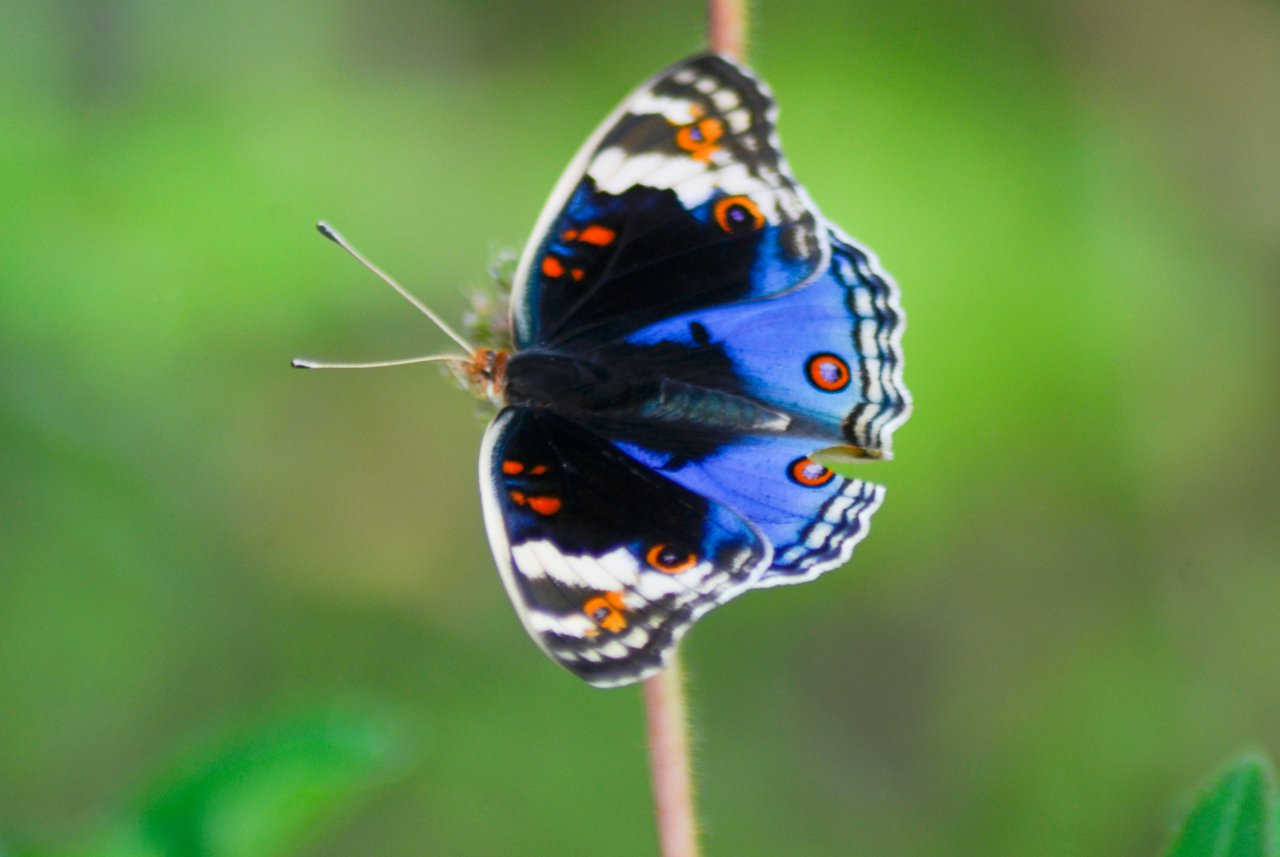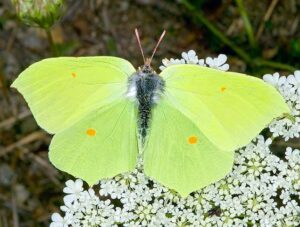

Blue Pansy
The Blue Pansy is a species of bright blue butterflies found in parts of Southeast Asian countries, Australia and Africa. It is known in this name especially in India. These are territorial arthropods and are spread in 26 local subspecies throughout its range. The butterflies love sunlight and are often seen sitting on bare ground, basking in the rays of the sun.
Did you know?
The blue pansies often form ‘all-boys groups’, where the males are seen hovering around in the sun in large numbers.
“Blue pansy” redirects here. For the other butterfly with this common name, see Junonia oenone.Junonia orithya is a nymphalid butterfly with many subspecies occurring from Africa, through southern and south-eastern Asia, and in Australia.In India, its common English name is the blue pansy, but in southern Africa it is known as the eyed pansy as the name blue pansy refers to Junonia oenone. In Australia, this butterfly is known as the blue argus, but this name also is used for the Aricia anteros in Europe.The Blue Pansy has been declared as the state butterfly of the union territory of Jammu and Kashmir in India.
Description
Male upperside: somewhat more than half the forewing from base velvety black, apical half dull fuliginous; cell-area with or without two short transverse orange bars; a blue patch above, the tornus; the outer margin of the basal black area obliquely zigzag in a line from the middle of costa to apex of vein 2, including a large discal, generally obscure ocellus, which, however, in some specimens is prominently ringed with orange yellow. Beyond this a broad white irregularly oblique discal band followed by a short oblique preapical bar from costa; a small black orange-ringed ocellus beneath the bar, a subterminal continuous line of white spots in the interspaces and a terminal jet-black slender line; cilia alternately dusky black and white. Hindwing blue shaded with velvety black towards base; a postdiscal black white-centred orange and black-ringed ocellus in interspace 2, a round minutely white-centred velvety-black spot (sometimes entirely absent) in interspace 5; the termen narrowly white, traversed by an inner and an outer subterminal and a terminal black line; cilia white.
Underside forewing: basal half with three black-edged, sinuous, broad, ochraceous-orange transverse bands, followed by the pale discal baud; ocelli, preapical short bar, subterminal and terminal markings much as on the upperside; the discal band margined inwardly by a broad black angulated line which follows the outline of the black area of the upperside. Hindwing irrorated (sprinkled) with dusky scales and transversely crossed by subbasal and discal slender zigzag brown lines and a postdiscal dark shade, on which are placed the two ocelli as on the upperside; subterminal and terminal faint brown lines, and a brownish short streak tipped black at the tornal angle below the lower ocellus.
Female. Similar, with similar but larger and more clearly defined ocelli and markings; the basal half of the forewings and hindwings on the upperside fuliginous (sooty) brown, scarcely any trace of blue on the hindwing. Antennae brown, head reddish brown, thorax and abdomen above brownish black: palpi, thorax and abdomen beneath dull white.
Common Name: Blue Pansy
Scientific Name: Junonia orithya
Family: Nymphalidae
Subfamily: Nymphalinae
Tribe: Junoniini
Wingspan: 2.3 to 3.0 in
Place of origin: Central & Southern Africa, South & Southeast Asia, Australia



Life history
Larvae:”Head and body of a very dark shining black shading into brown. … head on a short neck, latter of an orange colour for a short distance; caudal extremity also tipped with orange. Body covered with perpendicular spines armed with strong radial hairs. … Head bifurcated, reddish spot in centre of face, a small spinous process in the angle of each eye.”
Pupae:The pupa is “suspended by tail, naked; wing-covers of a muddy yellow; rest of body of a purplish colour variegated by lines of a dull creamy white. Slight projections of an angular nature along abdomen.” (Idem.)
Adults:The adults occur in open areas, often sitting on bare ground. This species has a stiff flap and glide style of flight and maintains a territory, driving away other butterflies that enter it.
Blue Pansy Butterfly (Junonia orithya)

This time I would like to show you some recent pics of a pansy butterfly (Junonia orithya), the day I found, it was busy flying here and there over the wild plants. Luckily, I used DSLR, so I could be able to take these photos from a distance range. This species is relatively common in Indonesia, even sometimes we can find this typical butterfly in the bush, pretty much around the flower garden. Any butterfly, including this kind, tend to visit tiny flowers growing in grassy areas, and sunbathe with wings fully open. The flight is rapid and typically done in a gliding fashion. The design and spectrum of colors of this butterfly has attracted nature enthusiasts and butterfly hunters. From black-and-white patterns to multi-coloured designs, each species of butterfly is unique in its own right. The eyespots on the hind wings has been probably used to intimidate, confuse or misdirect predators. This butterfly is commonly found throughout Asia and Southeast Asia that usually produce wet season, dry season and intermediate forms that used to be seen in open areas of primary and secondary forest, including along riverbanks, roadsides and mostly hang around the flowers.


